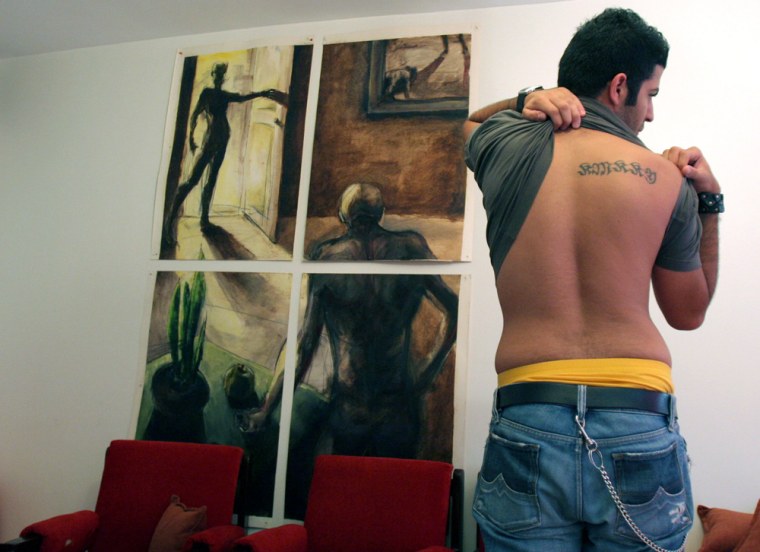It’s an undercover movement — literally: Tattoos have become a fad among many young Iranian women who proudly display them in private but must keep them under wraps from authorities.
“This is the tattoo generation,” said Milad, a 24-year-old artist who does body art as a sideline in his Tehran studio. He gave only his first name, fearing police might crack down.
“It’s the new sign of being hip.”
It’s a select, largely female clientele, mostly teens and 20-somethings in Tehran’s most affluent and style-savvy districts. But these have been the birthplaces for nearly every limit-testing trend since the strict dress codes of the Islamic Revolution began to erode in the late 1990s. It began with nose jobs then moved on to makeovers, body-hugging jackets, funky sneakers and head scarves that leave more hair exposed than covered.
As the Islamic coverings shrink, the next fashion frontier appears to be what’s underneath, and it’s catching on with men, too.
But officials don’t yet seem ready for tattoos, and even block access to tattoo Web sites.
Maryam, who is 20, wears a fish-shaped tattoo on her shoulder and won’t give her full name. “We have so many secrets from the authorities that they know about but can’t stop: our parties, our music. This is just another one,” she says.
What about consequences?
The tattoo wave is so new — and with such high chic appeal — that few people have paused to think much about the consequences of being marked for life, said Milad. The only real plan for the future is that some girls pick intimate spots that only a spouse would see — such as places normally covered by undergarments.
“Most girls don’t want their future mother-in-law, for example, to see they have a tattoo,” said Milad.
His back-room tattoo parlor is one of dozens in Tehran, its lights wrapped in brown paper for mood. His paintings — loosely rendered human and organic forms — cover the walls. Clients rest on a low divan as he works, using ink and a needle-tipped pen. Professional tattoo equipment is nearly impossible to find.
‘You still have to be careful’
He relies on word of mouth through the places where the tattoo generation flocks: the house parties with Western music and dancing; the malls and fast-food spots in leafy north Tehran. Milad’s business card has only his name and cell phone number.
“This is an underground business,” said Milad, wearing baggy shorts and purple Converse high-tops. “I’m not too scared of the police anymore. But you still have to be careful.”
He gets a call for a job about once a week, and the customers are getting noticeably younger.
“When I started two years ago, it was rare to get a teenage girl,” said Milad. “Now that’s the typical client.”
For an average of 800,000 rials — about $90 — they choose from Milad’s standard designs — interwoven flames called “Creeping Death,” a burning cross dubbed “Dragon Sword,” or, for the less daring, butterflies, flowers and unicorns.
But he’ll work up anything for an extra fee. He’s done marijuana leaves and symbols from Iran’s pre-Islamic Zoroastrian faith. A Muslim girl asked for some Hebrew letters — in a country whose leaders repeatedly call for Israel’s destruction.
“She didn’t even know what the letters meant,” said Milad. “She just liked how they looked.”
Art in adventurous places
Placing also is getting more adventurous; Milad said more women are asking for tattoos on the small of their backs or on their breasts. “No big deal,” shrugged Milad. But it would be an outrage in a society that still tries to segregate the sexes at some colleges and public events.
A growing number of men, too, are exposing themselves to the tattoo pen.
Yasha, a 20-year-old student, asked Milad to put his calligraphy skill to work on his back. Yasha now sports the English letters KMKKY to represent the names of his family.
He’s discussing another design for his right calf.
But Milad remains tattoo-free. “You can’t do them on yourself well, and I don’t like anyone else’s work,” he said.
